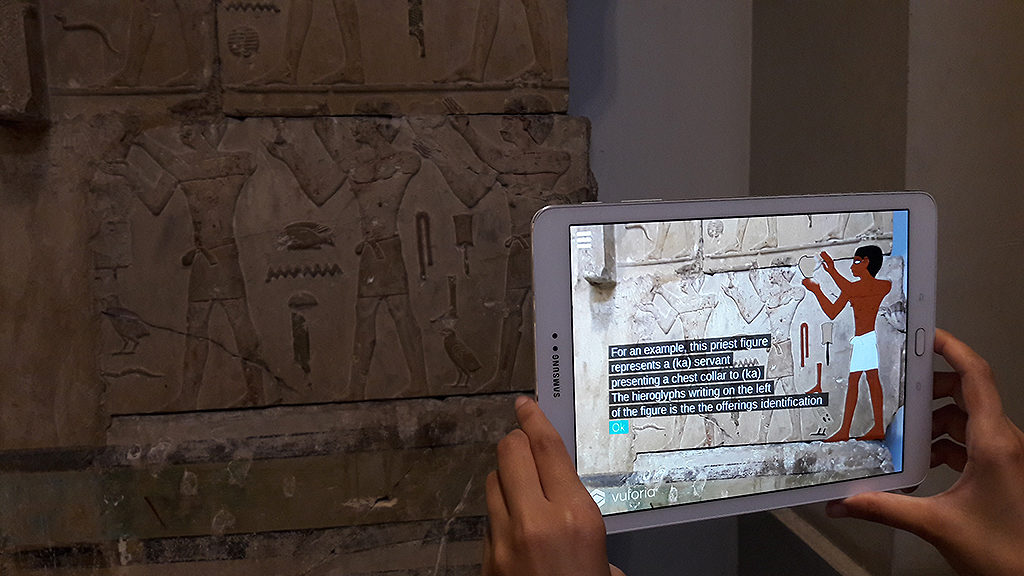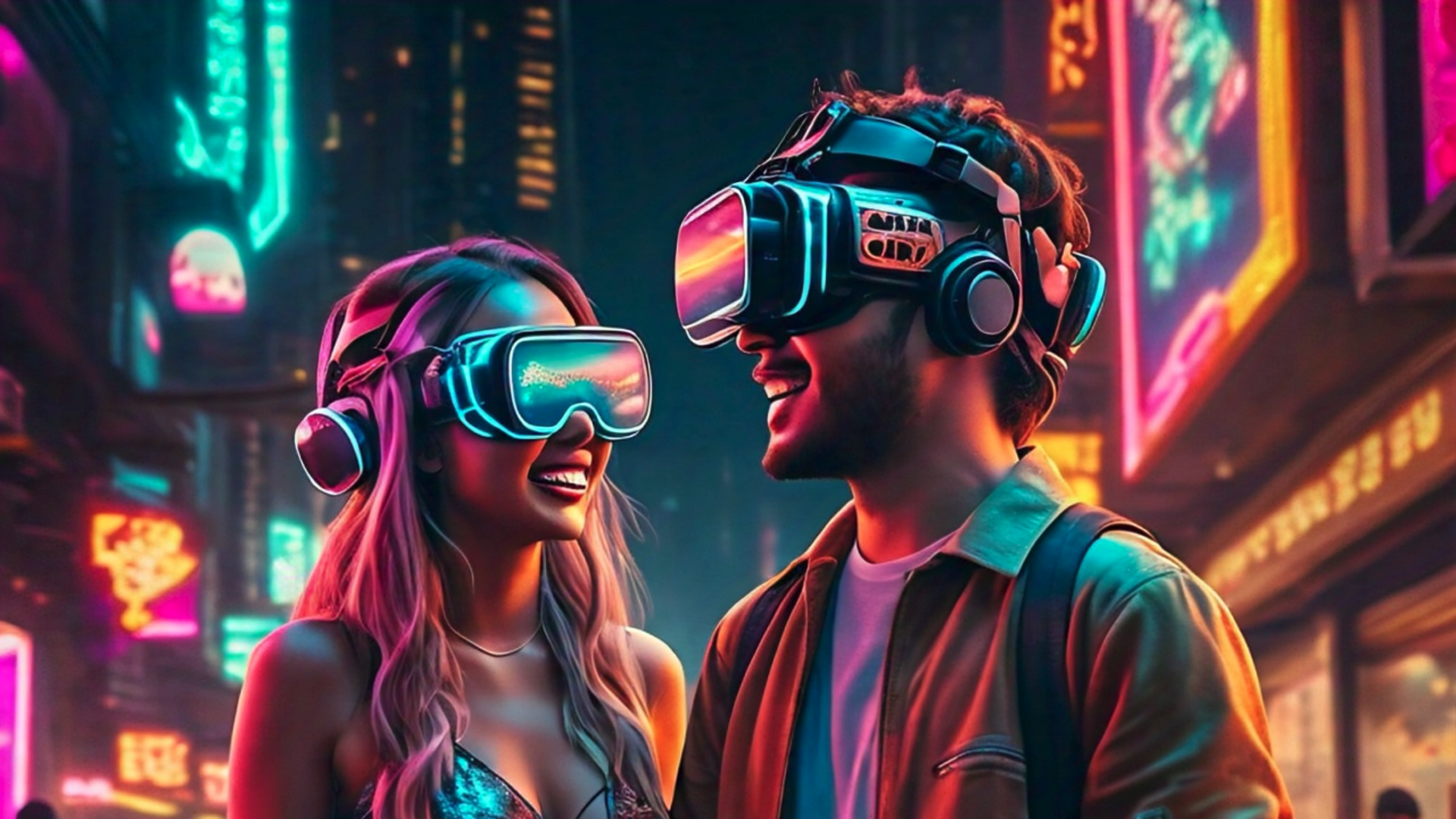AR as a tool to enhance the museum visitor experience
By Mohammad Nabil, Digital Heritage Research Manager, The Wall of Knowledge Project Manager, Bibliotheca Alexandrina CULTNAT
Quick Summary
- AR has the potential to solve museum visitors’ interpretation challenges.
- Bibliotheca Alexandrina is developing a prototype mobile AR app for the Rahotep Collection at the Egyptian Museum in Cairo.
- The prototype is designed around visitors’ needs.
- Early results indicate potential success, but validation is important to get a real assessment.
- Current mobile devices can provide decent experiences, but more capable mobile technologies are required to unleash the full power of AR.
Museum collections can be hard for the public to understand. Take an antiquities museum--an average visitor will appreciate the artistic value of the exhibited artifacts, but she\he most likely will not understand the story behind them.
Why did the ancient artist craft this piece in this particular form? Was it for social reasons or religious reasons? Maybe it was simply a trend at the time? These are typical questions that clearly require more than reading the artifact’s museum label or a didactic panel to answer.
Guided tours are an excellent way to get an in-depth explanation of a museum’s collection, but it’s hard to make such tours available as an on-demand service in all museums. Also some visitors prefer to tour museums at their own pace, feeling a sense of exploration.
Digital/audio guides are available in many museums to provide personalized and informative tours, but they require special attention by the user who must still work to establish a link between what she/he reads or hears and the object of art. This could be a challenging task for complex artifacts where highlighting special parts of the object is necessary to tell its story.
By definition, Augmented Reality (AR) has the unique advantage - over all other mediums - to display digital information directly on top of physical objects, reducing the chances of misunderstanding a work of art or failing to imagine something based upon the audio guide information. This makes AR the best medium to explain real-world objects.
AR has other advantages that it shares with some other technologies. It’s great for grabbing visitors’ attention - no matter what their age group is - and highlighting what is being described or explained; and AR is easily accessible to a wide audience through mobile devices.
With its ability to augment museum collections with an accessible and attractive digital layer of interpretation, AR seems to have the potential to become the preferred method for enhancing the museum visitor experience.
The Rahotep Experience
To evaluate AR’s potential impact on art interpretation in museums, a research team at Bibliotheca Alexandrina has started a study project that aims to develop a prototype AR experience for the Rahotep collection exhibited at the Egyptian Museum in Cairo.
The nearly 4,500-year-old collection includes several walls cut from the tomb of Prince Rahotep and his wife Nofret from the Old Kingdom in Ancient Egypt. The walls have beautiful bas-relief (low-relief) scenes, alas with no surviving colors, about the daily life of the prince and his family and the afterlife beliefs of ancient Egyptians.
The Rahotep experience is designed to run on Android smartphones and tablets. All interactions and augmentations are done through the devices’ displays. The experience helps users to decipher three walls from the collection by providing three different options: the ability to see the original colors of the scenes, to learn the story behind the scenes, and to translate the Egyptian hieroglyphs. The three modes were chosen to answer real needs coming from different visitor segments in a way that has not been possible to achieve using any other medium.
Seeing the original colors of the scenes is an essential need of visitors who are usually fascinated by the ancient Egyptian artworks and would like to experience what the colors might have looked like before they faded.
For visitors who are curious about the story behind the scenes, without going into too much detail, they can choose to have a simple step-by-step explanation. In this mode, each wall is divided into several interactive clusters that, when selected, are augmented by brief explanations in English. A recorded reading of the superimposed text is also played, making it extremely easy to understand the particular cluster being explained.
For visitors who have more time to spend and would like to know more in-depth information about the scenes, they can see a direct translation of the hieroglyphs by simply tapping the screen and hear the pronunciation of some of the old Egyptian words.
The Rahotep AR experience is part of the “Wall of Knowledge,” an ambitious project that aims at increasing the public engagement with art and heritage inside Egyptian museums through mobile AR. The project previously developed two experiences for the National Museum of Egyptian Civilisation and the Bibliotheca Alexandrina Antiquities Museums.
What’s Next
Each time we test an iteration of the Rahotep experience in the museum, we receive positive reactions from visitors. However, to get a real assessment of the user experience, we will validate the app by letting different groups of users try the prototype and collecting their feedback. This will be used as the basis on which we decide the best path to follow to achieve a more user-centric experience.
When it is ready, the final app could be available to visitors in two ways: by making it freely available for them to download and use on their own devices, or by providing high-end mobile devices with preloaded - and possibly higher quality - content as a paid service offered by the museum.
With its current capabilities, AR could provide personalized, informative, easy to use and attractive experiences to enhance museum visits. But museum collections are not all similar to Rahotep walls, which are flat and easy to augment. Museums also include complex, transparent, and behind-glass objects that are hard to augment using current mobile technology. To unleash the full potential of AR in the museum visitor experience, consumers’ mobile devices must become powerful enough to augment all types of museum objects with high-quality digital content.
Mohammad Nabil has been leading the R&D team at Bibliotheca Alexandrina CULTNAT since 2005 to exploit several technologies to enhance digital heritage experiences, including: panoramic imaging, laser scanning, photogrammetry, immersive multi-display systems and mobile AR. He also has a wide experience in developing VR experiences that run on modern VR headsets.
Mohammad participated in many digital heritage and virtual museums projects, on local and international levels. He was a speaker and a member of the International Scientific Committee of several digital heritage conferences.
Mohammad received a BSc degree in Architecture in 1996.



